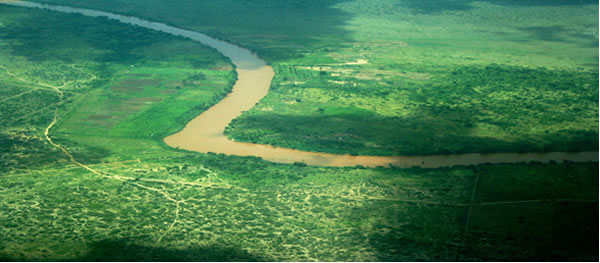
by Muuse Yuusuf
Sunday, September 18, 2011
Let us seek some answers from Somalia’s recent history.
From the colonial era to present day, the riverine regions have become contested territories for land grabbing. Some of the indigenous people witnessed the most brutal hav were reduced to no more than labourers as their farms were misappropriated by big landowners. Certainly, influential people and politicians bought ranches and other properties in the riverine regions. The introduction of land reform laws during the military regime era combined with the resettlement of non-indigenous clans in the regions forced some indigenous communities out of their lands. New regions were created to enhance the interest of other non indigenous clans.
From 1990s different clan militias fought over the control of the regions under different political pseudonyms. This led to the 1990s man-made famine and the UNOSOM operation to save hundreds of thousands of lives although by then 300,000 people starved to death. The destruction of farmlands and properties and the blockade of food supply chains from the sea and air-ports by merciless militia motivated by insatiable appetite for looting were one of the main causes of the famine. The end result was a huge displacement of people and the loss of indigenous knowledge and expertise in farming and trade. Historical cities such as Baydhabo, Baraawa and Marka became death towns. The indigenous people saw their lands occupied, changing hands between powerful factions, which shared the word “Somali” as their common denominator but hardly respected other Somalis’ right to work and live in their regions peacefully.
This takes us to 2000 and the rise of the Islamic Courts Union (ICU) and the “war on terror” in which Somalia became an experimental ground of the throat-cut politics of this huge global political event. Again the riverine regions became the battlefield for the wars waged by “Islamists” and the opposing forces leading to the Ethiopian invasion in 2006. This conflict again caused massive human displacement and of course the loss of expertise, skills and indigenous knowledge.
Since the Ethiopian troops’ withdrawal from the south, rather than recover from the previous stresses, the regions have been subjected to the brutal rule of Al-Shabaab whose main interest appears to be in the implementation of an ideology than human development. Being under the control of an extremist organisation, the regions became alienated and isolated and did not attract enough attention and support by stakeholders, including the international community, to prepare for the looming drought as the case was in other regions such as Puntland and Somaliland. Furthermore, Al-Shabaab’s interest in waging “holy wars” has diverted much needed local energy and resources that should have been used for economic and human development. Now the African Union is calling for embargo on the regions under the control of Al Shabaab hence further isolation of the riverine regions.
The riverine people have never really recovered from the non-ending vicious cycle of violence. The two political entities of “Riverine State” and “South-western State of Somalia”, which were created to give political clout to the people of the riverine, did not take off the ground because of a mixture of powerful and dominant clan militias disrupting the process, and of course the unfortunate political squabble and factionalism within the new political bodies’ leadership. This was a missed opportunity which could have protected people from political marginalisation and oppression by other dominant clans. It could have also acted as a governance structure capable of delivering some kind of public service to the people exactly as Puntland and Somaliland are providing to their constituents. Indeed, these regional administrations are helping to reduce the impact of drought and without them we could be witnessing famine in Somaliland and Puntland!
The point about the above historical narratives is that these regions have suffered most in recent Somali history particularly since 1990s. Like many other Somalis, people have not be given an opportunity to recover from the previous stresses, and have not been allowed to use their knowledge, expertise and skills to exploit fully the natural resources as various marauding militias have been disrupting their way of life hence creating a culture of dependence and hopelessness.
In conclusion, had the historical towns of Marka, Baraawa, and Baydhabo and their indigenous people been allowed to resume their historical role as centres of commerce and knowledge without disruption, not only would they have fed the populace in the riverine regions but would have produced enough food to feed the whole nation. Who is to say they cannot fend for their people when cities with fewer natural resources are feeding their citizens?
I am afraid until we Somalis allow these cities and their indigenous people to function fully like Hargeisa, Bosaaso and Borama we will have to get used to seeing more man-made famines. The riverine regions can cope with droughts.
Muuse Yuusuf
[email protected]